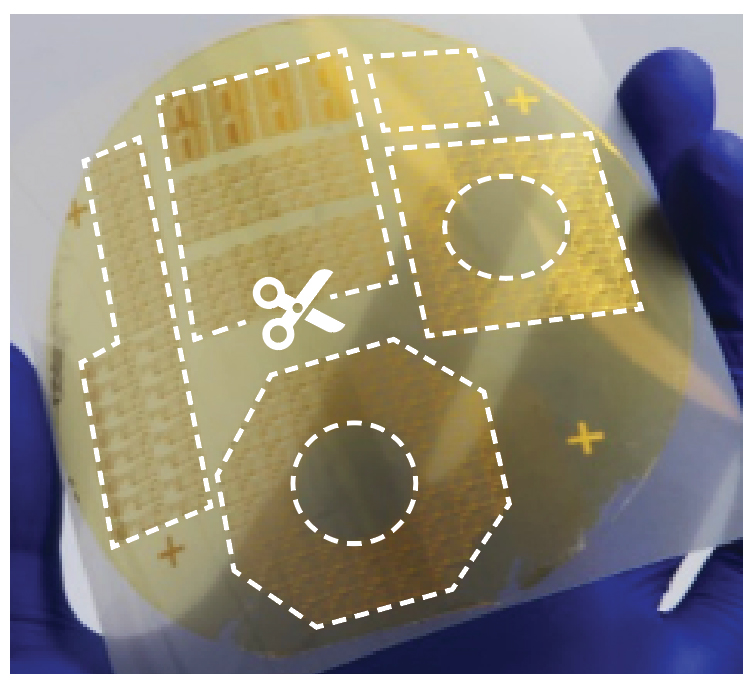
Chi Hwan Lee (ME ’07) is known for bringing people—and ideas—together.
“He’s a social guy,” says Young Kim, an associate professor of biomedical engineering at Purdue University. “He brings people out of their offices.” Lee’s friendly proactiveness spills over into his research. He spent his first year at Purdue giving a seminar about his research building solar cells in sticker-like thin films, called Sticktronics, to an unexpected group: Purdue’s medical researchers. In doing so, Lee formed new connections, and now his lab uses Sticktronics to revolutionize medical monitoring by designing wearable bioelectronic devices.
Learn what one Illinois Institute of Technology alumnus is doing to improve medical monitoring.
WHO: Chi Hwan Lee, assistant professor of biomedical engineering and mechanical engineering, Purdue University
WHAT HE DOES: Lee developed a printing technology—Sticktronics—that turns any thin film into a sticker that can be stuck onto any surface as easily as a temporary tattoo. Now he is using Sticktronics to develop wearable medical devices based on clinical needs.
WHY HE CAME TO ILLINOIS TECH: Lee started college as an industrial engineering student at Ajou University in Suwon, South Korea, and then took advantage of the university’s dual-degree partnership with Illinois Tech to complete a mechanical engineering degree in Chicago. While he came to Illinois Tech with plans to make a career in industry, Lee says Illinois Tech introduced him to a new culture of innovation, entrepreneurship, and ambition, ultimately convincing him to continue his education as a graduate student at Stanford University.

Photos: Courtesy of Purdue University
NOTABLE ACCOMPLISHMENTS: Every year approximately 9.4 million adults in the United States alone experience swallowing disorders. Treatment for a patient with persistent problems requires frequent monitoring that may involve making trips to a hospital multiple times per week for rehabilitation. In 2019 Lee and his colleagues developed a flexible, sticker-like sensor that a patient can easily put on in the comfort of their home. The sensor attaches directly to a patient's neck and sends their doctor all the necessary information to monitor their chewing and swallowing. In clinical trials, the little sensor sticker performed as well as the sensor contraptions that most patients currently need to visit a hospital to use.
Lee is also working on a smart contact lens project that provides ocular health monitoring. Adding electronics into a material that has to be transparent—and wet—has unique design challenges. While companies such as Google have attempted smart contact lens projects, they have tended to make the contacts using plastics that are easy to add electronics into but not very wearable, drying out the eye or depriving it of oxygen. Instead, Lee and his colleagues have developed a way to build the sensors directly into the standard commercial hydrogel soft contact lenses that many people already comfortably wear. Lee’s Purdue colleague Hugh Lee, associate professor of biomedical engineering, says, “None of the advances in wearable sensors and other devices will matter if people do not actually wear them. His technology enables this.”
GREATEST CHALLENGE: The problems his research takes on, Chi Hwan Lee says, are too big for just one researcher. The multidisciplinary teams he has formed are essential to the success of his research. However, Lee says, “for general engineers, doctors use a completely different language,” which means identifying and understanding actual clinical needs is the most difficult yet most important step in his research process.
WHAT’S NEXT: Lee says he wants to focus on progressing his contact lens design into a next-generation wearable medical device. “For translational research, it’s important to put a lot of effort into the commercialization of technology. I’m really eager to bring these technologies out of the university, and I believe these wearable devices can help actual patients manage disease in the near future,” says Lee.